- Joined
- Nov 3, 2008
- Thread Starter
- #141
hold on i will see if I can pull the specs on the slower of the 2 3.3 benches
Welcome to Overclockers Forums! Join us to reply in threads, receive reduced ads, and to customize your site experience!
View attachment 71065
I have a couple more marks to post I will then do a little study of the data and post my findings.
Nice little endeavor hereView attachment 71065
I have a couple more marks to post I will then do a little study of the data and post my findings.
Nice little endeavor here
I'm not sure if you missed these testings, but for K10 65nm, Ganged vs. Unganged, 533 vs. 1066, and, K8 vs K10 Cache/Mem differences have been thoroughly examined in these excellent articles.
http://ixbtlabs.com/articles3/cpu/amd-phenom-x4-9850-ganged-unganged-p1.html
http://ixbtlabs.com/articles3/cpu/amd-phenom-x4-9850-ddr2-533-p1.html
http://ixbtlabs.com/articles3/cpu/rmma-phenom.html
K10 was a big boost in many bus, link, interconnect and latency limitations of K8.
Are you able to run this test? http://www.xtremesystems.org/forums/showpost.php?p=3631328&postcount=1
I cannot vouch for its accuracy but the components and datapaths its polling limitations of is the exact aspect which gives any CPU working power for each type of code. Its just removing software/driver/operating system limitations and trying to poll the real power of each CPU.

Thanks for the test data.All of my current tests are @ 3.0 if you want 3.2 or possibly 3.3 let me know.

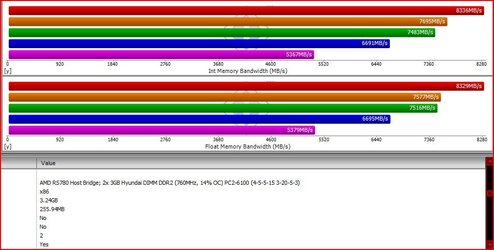
Check the latency, tighter timing with lower clocks can have the same lat as higher clocks with looser timings.
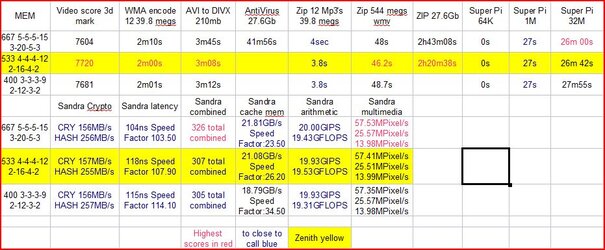
Thanks for the data!The timings are titer to make the marks as close as I can.
<snip pic>
The DivX was 2m 57.4s
If you like I can post a score @the 533 mem sp 4-4-4 @ 3.2 Ghz as my others are at 3.0 Ghz and I think my titer timings at the same proc speed will win out. I really think the only way to actually see an advantage at Xmem speed is to have is to either have enough data to cause a bottle neck at the lower clocked faster timed memory or equal or better timed faster memory.
This as I have said before is system specific but as I also said I remember when you might if you were lucky have a clock gen jumper on the mobo and the only way to get more performance was to buy 60ns ram and titen the timings.
Hope this data serves you well.

Thanks for the data!
I thought the other was done at 3.2 GHz? - my bad. If the other data is 3.0 GHz then 250x12 (can you run a 250 clock?) or 231x13 would be good for a comparison. I'm just trying to see the difference at a higher clock speed but the same CPU speed. I know the higher clock raises RAM speed as well, but that's kinda' the point - as long as the RAM sticks are the same.Sandra numbers from this test show an obvious jump in bandwidth (as they should) but it's the CPU performance using various RAM timings/speed - especially "real world" - that I'm trying to figure out. The theory I'm trying to prove/disprove is that NB speed was the limiting factor in your first run tests and why the 533 RAM speed was better or equal to 667 RAM speed performance ...
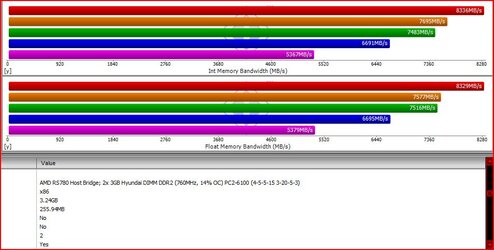
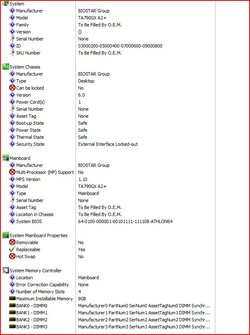
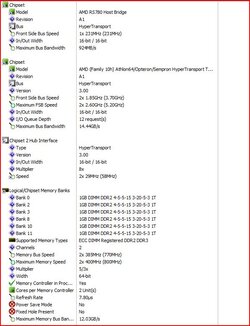
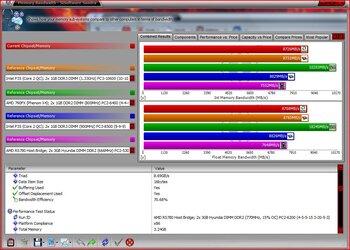
Did all of my stability testing before installation of new proc. 238 is highest completely stable I will go with the 231.
As to you wondering about the timing v/s clock speed look at it this way: The timings and the clock speed have an indirect correlation to each other but a direct correlation to total system performance. Let us say you are running a 667 Mhz colum strobe of 5 is not bad however so the CPU sends a fetch every 5 cycles of the FSB so 200/5=40x1Mhz=4000000 now we move to cas 4=5000000 now realize that this is independent of the memory and is controlled by the cpu through bios (limited by memory capability) however and that you also have row and column to row. Now if we take the cpus ability to fetch data that is not in cache and write that data back that is where latency comes into play as long as your throughput is >= mem speed then you will always be faster moreover if mem speed and or timings are too slow total system performance is hurt.
 FSB 231 770 mem speed cas4 231/5=46.2x1Mhz=46200000 column address strobes per sec= ~15% increase so the path to faster memory is to try to get 1-1 =1-2 due to reported speed ddr/2
FSB 231 770 mem speed cas4 231/5=46.2x1Mhz=46200000 column address strobes per sec= ~15% increase so the path to faster memory is to try to get 1-1 =1-2 due to reported speed ddr/2
 Thanks for the input Guy's
Thanks for the input Guy's
